








The magazine of the art-form of the photo-essay
“A free, really high quality photo-essay magazine. Fabulous!”
Stephen Fry. British actor, writer and film & documentary maker

Jan 2016 back issue


by Doug Menuez
This edit is from a work in progress that traces my experience as an outsider traveling through a vast country with a
singular mission: to gather the favorite proverbs, idiomatic sayings and stories of diverse people from all walks of life in
every region. So far I’ve shot in Sao Paulo, Rio de Janeiro, Goiana and for this set of images I worked in the Northeast
state of Ceará where I spent a few days photographing jangadeiros, traditional fisherman named for their distinctive
small boats called jangadas.
These sayings and proverbs, while sometimes trite, often provide real comfort and meaning while revealing the hidden
roots and collective wisdom of the Brazilian psyche. They can also be sharply funny as with this enigmatic proverb
recited to me after I sailed on a jangada and commented on how it seemed pretty risky: “Passarinho que come pedra
sabe o cu que tem.” Loosely translated as the bird who eats stone knows his own asshole, it seems to mean that the
men wouldn’t sail the boat if they were not confident they’d survive, just as the bird would not eat the stone if not
confident it could also shit the stone. The fisherman in these images sail boats of a traditional design that serves their
purpose but are also known to be quite dangerous, especially in the treacherous waters off the Northeast coast in the
Atlantic Ocean. This area was off limits to the ships of the former colonizers from Portugal and other Europeans as too
dangerous to navigate.
Sayings and proverbs are used daily, all over the country to advise, commiserate, comfort and amuse. During times of
great change there is also a degree of uncertainty to life and sayings can add some measure of stability. I’ve seen
tremendous change since I began visiting Brazil in 1986 and have heard many sayings. I have tried to learn the
language and culture since marrying a Brazilian woman yet I realize that there are many things I will never quite
understand because I was not born and raised there. The sayings, while often completely mystify me, do provide a
glimpse into the culture that helps me begin to understand. Hopefully, my project will be a useful touchstone
connecting the modern Brazil with its timeless foundations.
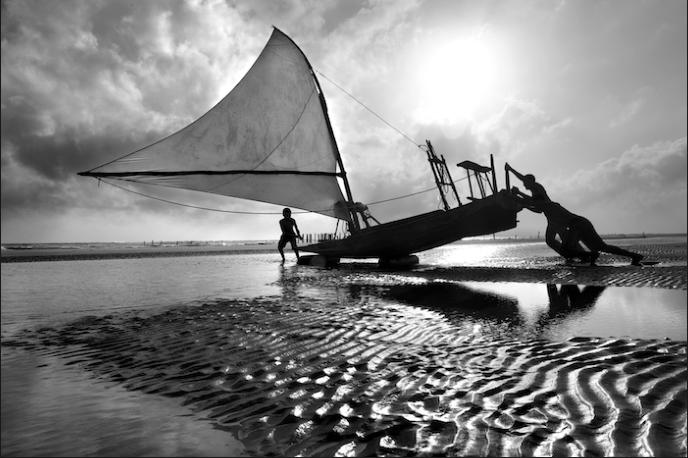
Samuel Silva de Oliveira, age 31 and partner Josivaldo Batista de Souza, 32, rise at dawn to push their light-weight,
flat-bottomed fishing boat called a Jangada close to the sea where they rig the sail and prepare to launch. The
Jangada is fairly small and more like a raft with a base of logs. Typically hand-built, without nails or metal, from local
woods and employs the classic Latin sail design which some trace back to the ancient Greeks. This design allows for
sailing against the wind, but they constantly adjusting the sail and moveable mast as they go. Flecheiras, Brazil, 2011.
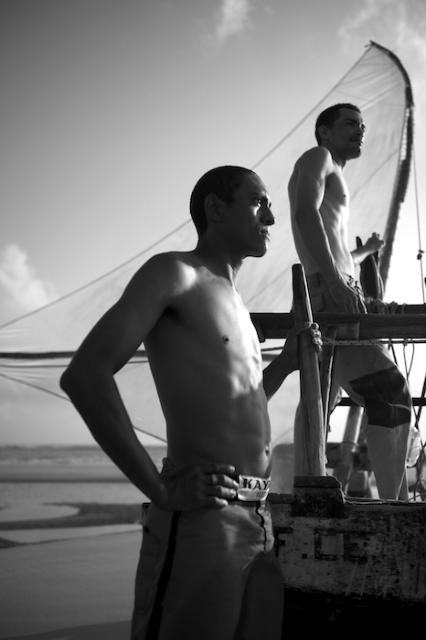
Jangadeiros Josivaldo Batista de Souza, left, and Samuel Silva de
Oliveira, at right, with their jangada. Flecheiras,Brazil, 2011.
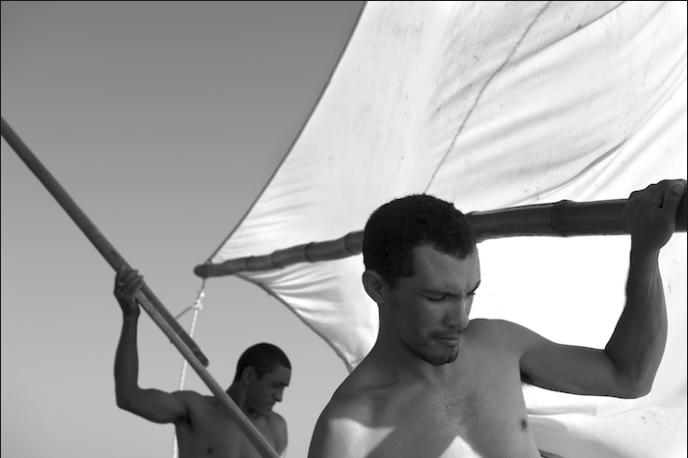
Josivaldo Batista de Souza, left, and Samuel Silva de Oliveira, at right making final adjustments to their boat before
sailing. Flecheiras, Brazil, 2011.
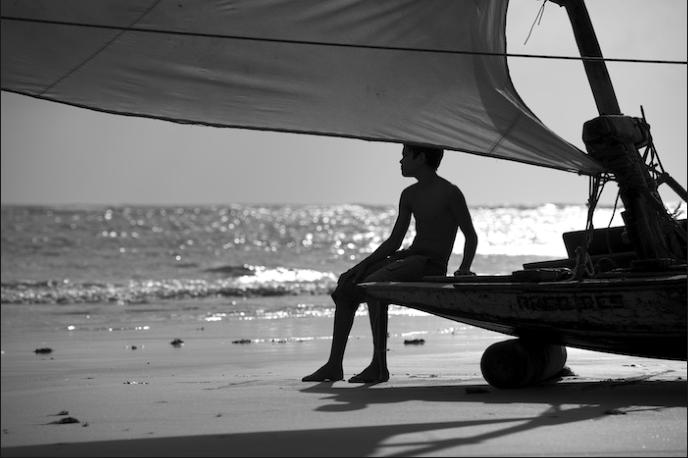
Anderson Lima da Silva, 13, son of fisherman Samuel Silva de Oliveira, waits and watches as his father prepares his
boat. He is learning to be a fisherman like his father and usually helps push the Jangada down to the water.
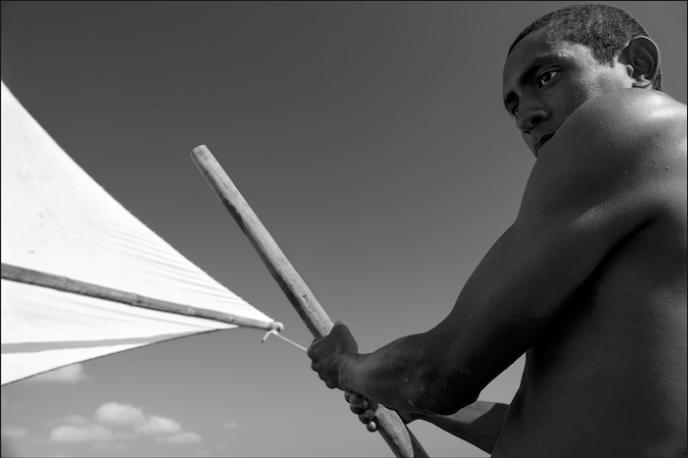
Josivaldo Batista de Souza manning the sail as he and his partner head out to fish. It’s incredibly difficult and
dangerous to sail Jangadas in the open ocean and there are steady losses of fisherman each year. Flecheiras, Brazil.
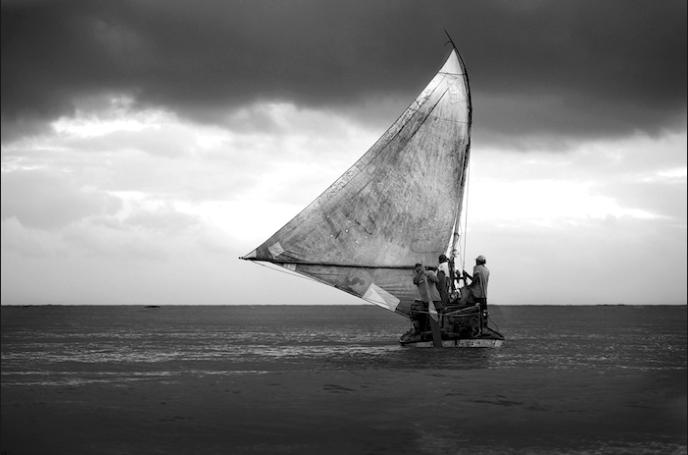
Fisherman sharing a jangada sail out at dawn to fish in the Atlantic. Jangadas are found today only in the Northeast of
Brazil where the locals have been sailing these traditional boats for hundreds of years, passing the techniques down
through the generations. Near Flecheiras, Brazil, 2011.

A jangadeiro adjusting his sail before heading out to fish in the dangerous swells of the Atlantic. He may sail and fish
for up to three days using only the sun and stars for navigation. Near Flecheiras, Brazil, 2011.
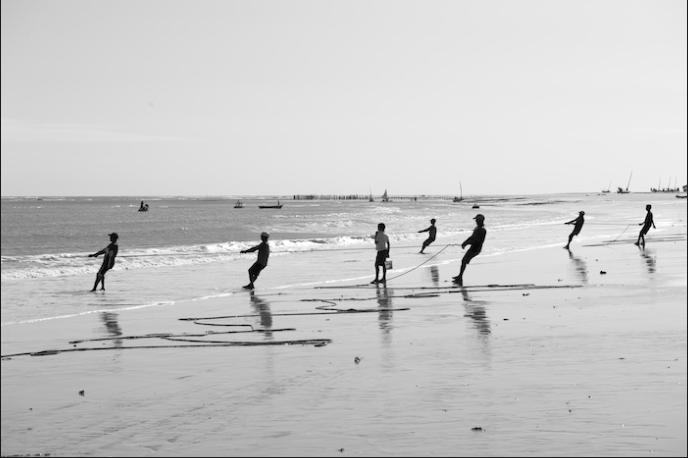
In addition to what the fleet is catching, villagers of Flecheiras, Brazil run drag nets close to shore and pull in a wide
variety of fish. 2011.
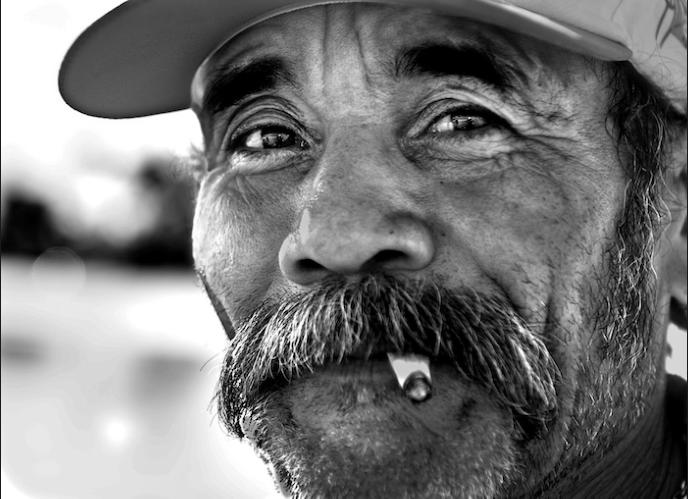
As the nets are pulled up different types of fish are separated into baskets such as this one of freshly caught Enguia
(eel). Flecheiras, Brazil, 2011.
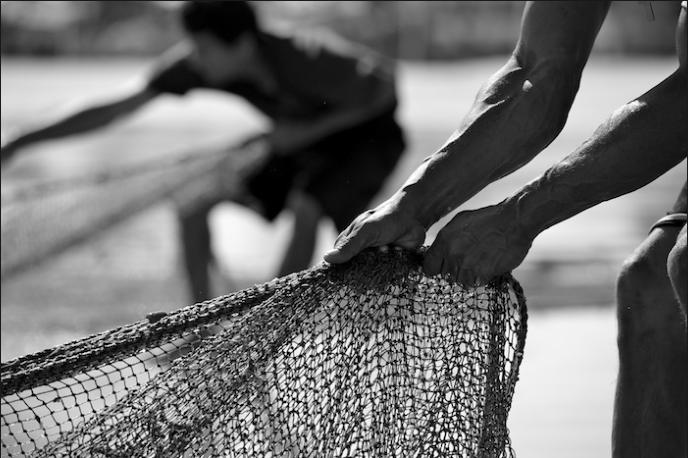
A veteran jangadeiro on the beach in Flecheiras, Brazil, 2011.

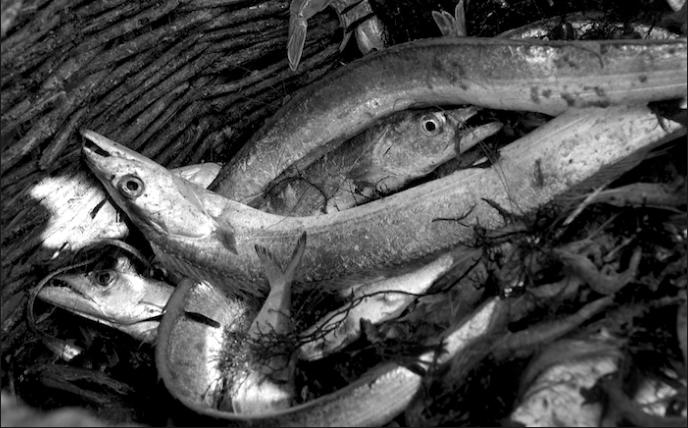
A local fisherman shows off one of the Enguia (eel) he’s just caught. Flecheiras, Brazil, 2011.
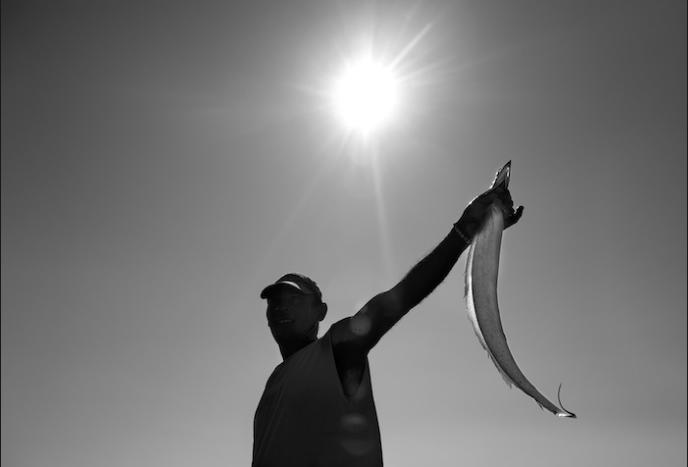
Villagers pull in drag nets on the beach in Flecheiras, Brazil, 2011.
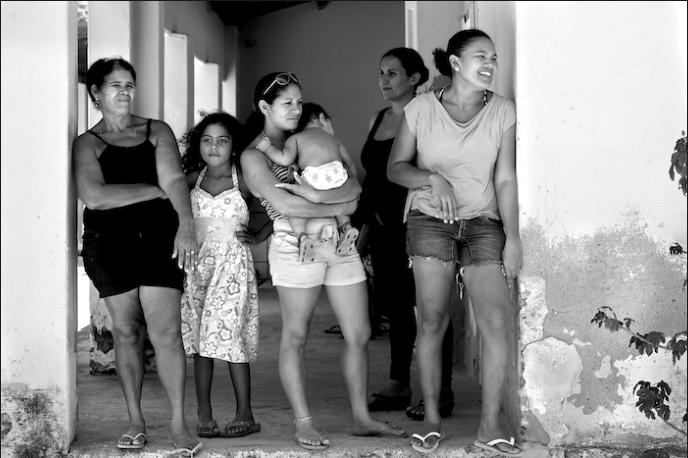
Mothers, wives and children of fisherman gather at a local clinic in Fleicheiras, Brazil, 2011.
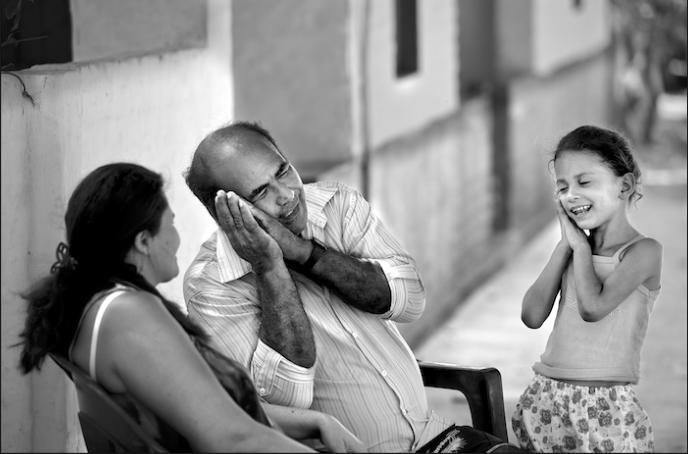


Raimundo Nonato Dias de Moura, known as Tio Mundoca, is a fisherman and storyteller, and is telling his
grandaughter Luiza Helena a story about his grandfather getting angry and throwing a cat overboard because it ate the
bait. But the cat didn’t die, and came swimming up to the boat with fish in his claws. They knew this cat was lucky and
magical so from then on they took it on every voyage. They are talking in front of their house in the Vila Guajirú near
Flecheiras, Brazil, 2011.
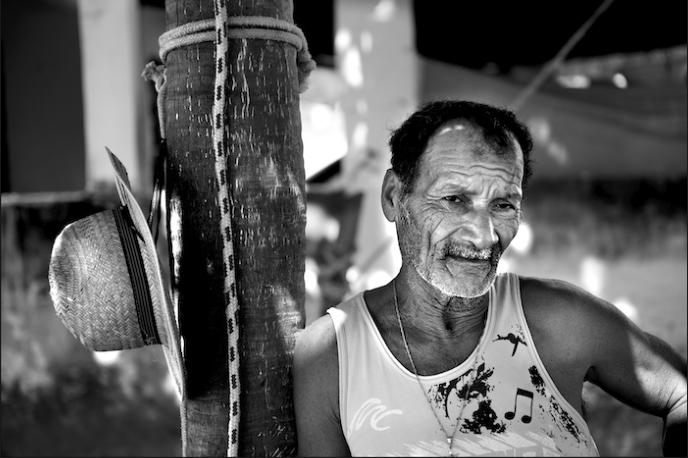
Raimundo Alves dos Santos, 74, Fleicheras, Brazil. “It’s a hard life, but if a week passes without fishing, I feel the sea
calling me.” He has 9 kids of which all the boys are also fisherman and has been fishing everyday for the past 60
years. When asked for a proverb he said, “O pescador não mente; ele aumenta, mas não inventa.” The fisherman
doesn’t lie; he might embellish, but he doesn’t invent. Fleicheiras, Brazil, 2011.
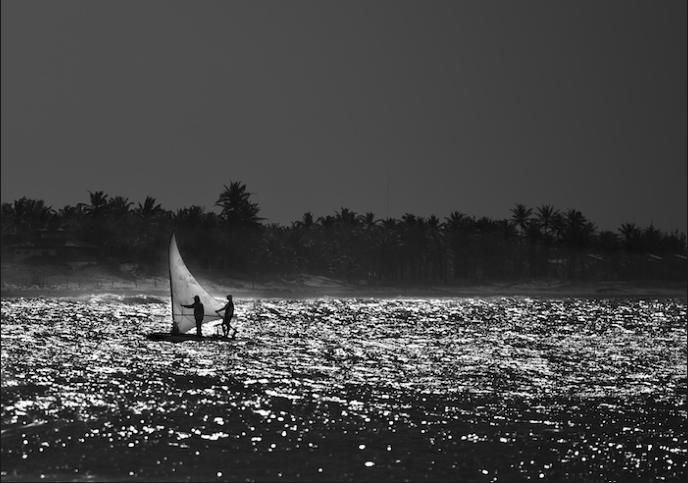
Fisherman returning home safe to Flecheiras with their catch. Ceará, Brazil, 2011.





